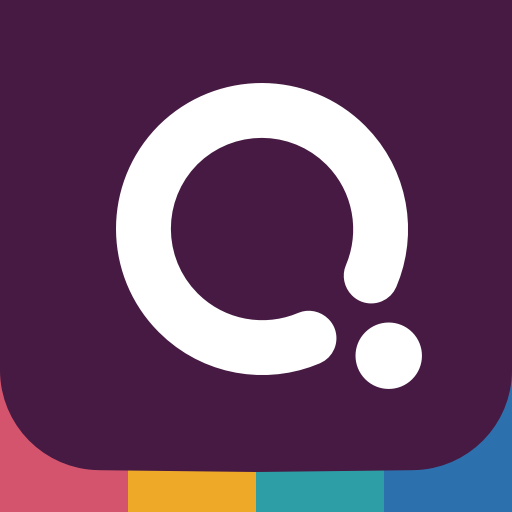Nearpod
About this app
Looking for an interactive and engaging way to deliver lessons in the classroom?
Learn more about Nearpod, its key features, including interactive lessons, collaboration tools, and assessment features.
Discover how Nearpod works, what devices it can be used on, and the benefits of incorporating it into your teaching practice.
Explore the limitations of Nearpod and get tips on how to use it effectively in the classroom.
Check out alternatives to Nearpod such as Kahoot, Pear Deck, and Classcraft.
Dive into the world of Nearpod and revolutionize the way you teach!
What is Nearpod?
Nearpod is an innovative educational technology platform that revolutionizes classroom engagement through interactive presentations and real-time assessment. It provides teachers with a range of interactive content and learning tools to create engaging lesson plans and virtual classrooms for enhanced student participation.
The interactive features of Nearpod, such as virtual reality field trips, simulations, and quizzes, immerse students in the learning process, making complex concepts more understandable and memorable.
Teachers can track student progress in real-time, providing immediate feedback to individuals or the entire class.
With Nearpod, traditional lectures are transformed into dynamic, interactive sessions that encourage active participation and collaboration. This not only enhances student engagement but also fosters meaningful teacher-student interactions, creating a more enjoyable and effective learning environment.
What are the Features of Nearpod?
Nearpod offers a plethora of features tailored to enhance the educational experience, including interactive lessons, collaboration tools, and robust assessment and feedback mechanisms.
These features play a crucial role in creating dynamic and engaging learning environments. Interactive lessons allow students to actively participate in the lesson, fostering deeper comprehension and retention of information. The collaboration tools facilitate real-time interaction between teachers and students, promoting discussion and knowledge sharing. The robust assessment and feedback mechanisms enable educators to track student progress, identify areas for improvement, and provide personalized support. By integrating multimedia resources and teacher tools, Nearpod enables educators to deliver enriching and interactive lessons that cater to diverse learning needs, ultimately enhancing student engagement and academic success.
Interactive Lessons
Interactive lessons in Nearpod are designed to boost student engagement through immersive learning experiences, including interactive quizzes, polls, and multimedia content that cater to diverse learning styles.
By incorporating interactive features like virtual field trips, simulations, and collaborative activities, Nearpod offers a dynamic platform for students to actively participate in their learning.
For instance, teachers can create engaging lessons using virtual reality experiences that transport students to historical landmarks or scientific expeditions, sparking their curiosity and promoting exploration.
Interactive quizzes with real-time feedback encourage students to assess their understanding and progress, fostering a sense of accountability and motivation in the learning process.
Collaboration Tools
Nearpod's collaboration tools facilitate seamless interaction and idea sharing among students, promoting classroom collaboration and fostering a dynamic learning environment.
Through features like virtual field trips, collaborative discussions, and interactive quizzes, Nearpod encourages group work and peer-to-peer engagement. These tools enable students to work together on projects, share their thoughts in real-time, and provide feedback to each other, fostering a sense of community in the classroom. By using Nearpod's collaboration tools, teachers can create interactive lessons that students can engage with, increasing their participation and making learning more enjoyable and meaningful.
Assessment and Feedback
Nearpod's assessment and feedback features enable teachers to conduct real-time assessments, deliver formative feedback, and track student progress effectively, leveraging instructional technology for enhanced learning outcomes.
By providing a variety of interactive activities, such as quizzes, polls, open-ended questions, and collaborative boards, Nearpod allows educators to gather immediate insights into student comprehension levels. Teachers can create personalized learning experiences by analyzing real-time data to tailor their instruction to meet the diverse needs of students. The platform's integrated feedback tools enable educators to provide timely and specific comments, fostering a supportive and responsive learning environment. This dynamic approach not only encourages student engagement but also helps identify areas needing further clarification or reinforcement.
How Does Nearpod Work?
Nearpod operates as a versatile educational platform that seamlessly integrates with various devices, enabling teachers to deliver interactive lessons in both physical and virtual classrooms, making it ideal for blended learning and remote teaching scenarios.
Its adaptability to different learning environments allows educators to effortlessly transition between in-person and online teaching. By supporting mobile learning, Nearpod enables students to engage with lesson content using their smartphones or tablets, promoting active participation and collaboration. The platform's interactive features, such as polls, quizzes, and collaborative boards, enhance digital classroom experiences, fostering student engagement and enabling real-time feedback for teachers. This adaptability and innovation make Nearpod a valuable tool in today's evolving education landscape, particularly in remote learning settings.
What Devices Can Nearpod Be Used On?
Nearpod is compatible with a wide range of devices, including smartphones, tablets, laptops, and interactive whiteboards, ensuring seamless access for students and teachers across various technology platforms.
This compatibility with different devices enhances the flexibility of Nearpod, allowing educators to engage students via their preferred technology tool. Whether students are using their smartphones on the go, tablets in small group settings, laptops for individual work, or interactive whiteboards for whole-class participation, Nearpod adapts to meet diverse learning preferences.
The user-friendly interface of Nearpod further streamlines the integration of technology into classrooms, facilitating interactive lessons, real-time assessments, and collaborative activities seamlessly.
What are the Benefits of Using Nearpod?
Utilizing Nearpod in educational settings offers numerous benefits, including engaging and interactive lessons, real-time feedback and assessment, as well as enhanced collaboration and communication between teachers and students.
By incorporating Nearpod, teachers can create multimedia-rich presentations that captivate students' attention, turning passive listeners into active participants. This interactive platform enables teachers to embed quizzes, polls, videos, and simulations within their lessons, making learning more dynamic and stimulating. Nearpod facilitates personalized learning experiences as students can progress at their own pace, fostering a deeper understanding of the material. Educators can also track students' progress in real-time, identify areas of difficulty, and provide immediate support, leading to improved learning outcomes.
Engaging and Interactive Lessons
Nearpod excels in providing engaging and interactive lessons that transform traditional classrooms into dynamic virtual environments, fostering student participation and knowledge retention through interactive content.
Through features like virtual reality field trips, 3D models, interactive quizzes, and collaborative activities, Nearpod offers a wide range of tools to create immersive learning experiences. For instance, teachers can take students on virtual journeys to historical landmarks or use 3D models to explore complex scientific concepts. The platform also allows for live feedback and real-time assessments, ensuring that students are actively engaged and absorbing the lesson material.
Real-time Feedback and Assessment
Nearpod's real-time feedback and assessment tools enable educators to gauge student understanding instantly, fostering a culture of active participation and continuous learning in the digital classroom space.
Through Nearpod's student response system, teachers can pose interactive questions, polls, and quizzes to students in real-time, encouraging immediate feedback and participation. This engagement strategy not only captures students' attention but also allows educators to adapt their teaching methods based on the responses received, thus personalizing the learning experience.
The real-time assessment features enable teachers to track individual progress, identify areas of strength and weakness, and provide timely interventions to support student growth and achievement. These tools create a dynamic and interactive learning environment that benefits both teachers and students by enhancing understanding and retention of course material.
Collaboration and Communication
Nearpod's collaboration and communication features foster a sense of community in online learning environments, enabling seamless interaction and knowledge exchange through interactive lessons and group activities.
These tools play a crucial role in promoting active participation among students by facilitating peer-to-peer interaction. For instance, collaborative activities like virtual group discussions, real-time polls, and interactive quizzes encourage students to engage with course material and interact with their peers. Features such as live chats, discussion boards, and collaborative whiteboards create a conducive environment for students to share ideas, ask questions, and work together on projects, leading to deeper learning experiences and enhanced academic outcomes.
What are the Limitations of Nearpod?
While Nearpod boasts numerous benefits, it also presents certain limitations, such as limited free features and the requirement for a stable internet connection to fully utilize its educational software capabilities.
These limitations can pose challenges for educators who may not have the budget to access premium features or face unreliable internet connectivity in their teaching environments. The lack of access to the full suite of features on the free version might hinder teachers in creating engaging and interactive lessons, potentially limiting the overall effectiveness of their instructional materials.
To address these challenges, educators can consider exploring alternative free interactive presentation tools or investing in reliable internet infrastructure to ensure smooth execution of their educational content through Nearpod.
Limited Free Features
One of the limitations of Nearpod is the presence of limited free features, which may restrict access to certain advanced tools and resources essential for creating comprehensive blended learning experiences.
This can be challenging for educators who rely heavily on technology to enhance their teaching methods and engage students effectively. Despite these limitations, educators can still make the most of the available features by strategically planning their lessons and utilizing multimedia content to create interactive and engaging presentations. By customizing existing templates, integrating multimedia resources, and incorporating interactive activities, teachers can enhance the overall learning experience for students.
Educators can explore alternative free or low-cost digital tools to complement Nearpod's features and offer a diverse range of learning experiences in blended learning environments.
Requires Stable Internet Connection
Nearpod's reliance on a stable internet connection poses a challenge for remote learning environments, impacting access to educational content and hindering seamless technology integration within virtual classrooms.
The significance of consistent internet connectivity becomes evident as students and educators strive to engage in interactive lessons through Nearpod. Without a reliable connection, the flow of learning can be disrupted, resulting in frustrations and limitations in the transfer of knowledge.
To tackle this issue, proactive measures such as optimizing Wi-Fi signals, using wired connections when possible, and establishing communication protocols for troubleshooting internet issues can help maintain a stable connection during Nearpod sessions. By addressing connectivity challenges, educators can ensure that students have uninterrupted access to valuable educational resources and activities on the platform.
How to Use Nearpod in the Classroom?
Integrating Nearpod into classroom instruction is a seamless process that involves creating an account, selecting or designing interactive lessons, sharing content with students, and monitoring their progress to enhance student engagement in real-time.
- Once educators have set up their Nearpod account and have selected the appropriate interactive lessons for their students, they can proceed to share the content via live sessions or student-paced mode.
- During the lesson, instructors can engage students by incorporating various interactive features such as polls, quizzes, videos, and virtual reality experiences. By including these elements, educators can cater to different learning styles and keep students actively involved in the lesson.
As the lesson progresses, teachers can track student responses and understanding through real-time feedback, allowing for immediate intervention and personalized support where necessary.
Step 1: Create an Account and Log In
- The first step in using Nearpod is to create an account and log in to access its wide array of virtual classroom features, enabling educators to leverage educational technology for interactive learning experiences.
- By guiding educators through the setup process, they can unlock the full potential of Nearpod's tools and resources for enriching their lesson plans and engaging students in innovative ways. Establishing an account paves the way for teachers to seamlessly integrate multimedia content, interactive activities, and real-time assessments into their teaching practices, fostering a dynamic and immersive learning environment. This foundational step also allows educators to personalize lessons, track student progress, and collaborate with colleagues to enhance teaching strategies within the platform.
Step 2: Create a Lesson or Choose a Pre-made One
Educators can either create customized lessons tailored to their teaching objectives or select pre-made lessons from Nearpod's extensive library, leveraging teacher tools and interactive content to enhance student learning experiences.
By having access to a wide array of interactive resources such as virtual reality experiences, simulations, quizzes, polls, and collaborative activities, teachers can design engaging and effective lesson plans for students with diverse learning styles and preferences. These tools enable educators to personalize the learning process, cater to individual student needs, and create a dynamic classroom environment that fosters active participation and deep understanding of the subject matter.
Step 3: Share the Lesson with Students
Sharing lessons with students via Nearpod ensures active engagement and participation in interactive learning activities, fostering a collaborative and technology-integrated educational experience.
By incorporating features such as polls, quizzes, and open-ended questions, educators can create dynamic and interactive lessons that cater to diverse learning styles. Using multimedia elements like videos and simulations further enhances student understanding and retention of key concepts. Real-time feedback and assessment tools in Nearpod enable teachers to gauge student comprehension instantly, allowing for timely intervention and personalized support.
This symbiotic relationship between technology and pedagogy not only boosts student motivation but also cultivates critical thinking skills and academic growth.
Step 4: Facilitate the Lesson and Monitor Student Progress
Facilitating Nearpod lessons involves actively engaging with students, conducting formative assessments, and monitoring student progress in the digital classroom environment to ensure effective learning outcomes and personalized feedback.
Educators can enhance their Nearpod lessons by incorporating interactive elements such as polls, quizzes, and open-ended questions to stimulate student participation and provide immediate feedback. Real-time monitoring tools within Nearpod allow educators to gauge student understanding, address misconceptions promptly, and tailor instruction to meet individual learning needs. By analyzing data collected during Nearpod sessions, educators can identify trends, track student progress, and make informed decisions to optimize their teaching practices and the overall learning experience for students.
What are the Alternatives to Nearpod?
While Nearpod offers a comprehensive educational solution, educators may explore alternative platforms such as Kahoot, Pear Deck, and Classcraft to diversify their technology integration and engagement strategies in the classroom.
- Kahoot is known for its interactive quizzes and games that promote active participation and competitiveness among students.
- Pear Deck, on the other hand, specializes in interactive slide presentations that allow for real-time student responses and feedback.
- Meanwhile, Classcraft gamifies the learning experience by incorporating elements of storytelling and role-playing to incentivize student behavior and collaboration.
By incorporating these platforms alongside Nearpod, educators can cater to different learning styles and ensure a more dynamic and engaging classroom environment.
Kahoot
Kahoot is a popular educational platform known for its interactive quizzes and games that promote student participation and technology integration in the classroom, offering engaging learning experiences for learners of all ages.
By incorporating elements of gamification, Kahoot transforms traditional learning into an interactive and exciting experience, making it easier for educators to capture the attention of students. The platform allows teachers to create customized quizzes to assess learning outcomes effectively while keeping students actively engaged. Kahoot's user-friendly interface and seamless integration with various devices make it a convenient tool for both in-classroom and remote learning scenarios, improving teamwork and boosting classroom dynamics. With Kahoot, educators can create a fun and immersive learning environment that fosters active participation and knowledge retention among students.
Pear Deck
Pear Deck is a versatile tool for creating interactive presentations that facilitate blended learning environments, enabling teachers to enhance student engagement and participation through immersive learning experiences.
By integrating various interactive features such as real-time polls, quizzes, and open-ended questions, Pear Deck encourages active student involvement during presentations. This tool provides educators with valuable insights into student understanding and enables them to tailor instruction based on individual needs. Pear Deck supports personalized learning by allowing students to progress at their own pace and offering opportunities for meaningful collaboration and feedback. Pear Deck fosters a dynamic and inclusive classroom environment where every student's voice is heard and valued.
Classcraft
Classcraft is a gamified classroom management platform that fosters collaboration, student motivation, and behavioral engagement through interactive game elements, transforming traditional learning environments into immersive and dynamic educational experiences.
Engaging in the virtual world of Classcraft, students are motivated to participate actively in their learning journey. By incorporating elements of competition, collaboration, and instant feedback, Classcraft incentivizes students to demonstrate positive behaviors and engage more deeply with class content. The gamification features of Classcraft not only make learning fun and interactive but also provide teachers with tools to track student progress, adapt instruction to individual needs, and cultivate a positive classroom culture based on teamwork and shared goals.
Related Apps
-
SkySafari LegacyGETEducational
-
Google Play Books & AudiobooksGETEducational
-
Learn HTMLGETEducational



















